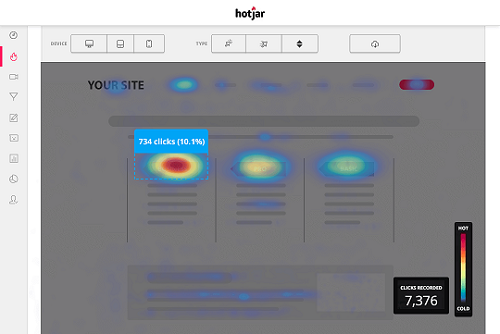Looking Back: The Smartphone at 20
Paying Homage To The Grandaddy Of Mobile Computing
The so-called ‘Screen Generation’ is coming of age; a child today has not only grown up in a world where everything comes to them through a screen, but they see touchscreens as the norm. Six-year olds know more about technology than 40 year olds, and an existence untethered from mobile access to the digital world seems increasingly far-fetched.
With this in mind, it’s difficult to imagine that the first smartphone came on the market just 20 years ago – although you’d be forgiven for racking your brains to recall the model of mobile computing before Apple blew the dam with the first iPhone in 2007.
IBM’s Simon (so named because they wanted to suggest that using it was as easy as ‘Simon Says…’) was first released on 16th August 1994. It was available only within a 15 state network in the U.S., cost $899, and sold around 50,000 units. Six months after its release it was off the market, but it still stands as the grandfather of the devices which every person now carries in their pocket.
Although it wasn’t called a smartphone (it was a ‘personal communicator’), it had many of the features which even the pinch to zoom kids of today may recognise. It had a calendar, could send and receive email, and even had a game called Scramble which involved moving squares around the screen to reveal a picture. It also functioned as an actual phone, of course, and even had some features which modern phones seem to lack: it had a built-in pager function and could be hooked up to a fax machine.
It’s fair to say that while Simon’s heart may have been in the right place, it was a little too ahead of its time to be a really viable option. It was released at a time with no mobile data, when no Web browsers had been released, and its battery could last an hour – 30 minutes if you were in an area with poor coverage. It did feature a rudimentary system for what we would now call apps, via a slot where cartridges could be inserted.
Despite weighing half a kilo Simon did find some popularity among the business community, although the lack of infrastructure meant that it was too revolutionary to really catch on. It was also a victim of IBM’s own corporate meltdown: the company had lost $16 billion and shed 100,000 employees in the three year’s prior to Simon’s release.
All this serves as an apt reminder that while ceaseless technological innovation is, of course, vital and exciting and fun to write about, equally important is the boring stuff which rolls on behind the scenes. The iPhone is a beautifully designed object, but what is less discussed is the beauty of Apple’s distribution network, or their marketing, or their investment and research and development strategy.
But for now it’s enough to celebrate the engineers who, with Simon, created perhaps the defining object of the modern age. It’s fun to speculate about what smartphones will look like 20 years from now, but it’s also important to take a moment to remember that everything we have today stands on the shoulders of 500g, 1MB, 160x293 display giants.
Douglas is an English Literature graduate who has written about everything from music to food to theatre, now a content creator for Social Media Frontiers. No topic too large or too small. Follow him @DouglasAtSMF.
Contact us on Twitter, on Facebook, or leave your comments below. To find out about social media training or management why not take a look at our website for more info http://socialmediacambridge.co.uk/.
Looking Back: The Smartphone at 20
![]() Reviewed by Anonymous
on
Monday, August 18, 2014
Rating:
Reviewed by Anonymous
on
Monday, August 18, 2014
Rating:














 Entrepreneur, international speaker on Social Media Marketing. First one in the UK to write and speak in conferences about Twitter as a marketing tool. Consultant to Corporate Companies, Government Organizations, Marketing Managers and Business Owners.
Entrepreneur, international speaker on Social Media Marketing. First one in the UK to write and speak in conferences about Twitter as a marketing tool. Consultant to Corporate Companies, Government Organizations, Marketing Managers and Business Owners. Aspiring novelist with a passion for fantasy and crime thrillers. He hopes to one day drop that 'aspiring' prefix. He started as a writer and soon after he was made Executive Editor and Manager of the team at Social Songbird. A position he held for 5 years.
Aspiring novelist with a passion for fantasy and crime thrillers. He hopes to one day drop that 'aspiring' prefix. He started as a writer and soon after he was made Executive Editor and Manager of the team at Social Songbird. A position he held for 5 years. Musician, audio technician, professional tutor and a Cambridge university English student. Interested in writing, politics and obsessed with reading.
Musician, audio technician, professional tutor and a Cambridge university English student. Interested in writing, politics and obsessed with reading. Recently graduated with a BA in English Literature from the University of Exeter, and he is about to study an MA in Journalism at the University of Sheffield. He is an aspiring journalist and novelist; in his free time he enjoys playing chess, listening to music and taking long walks through nature.
Recently graduated with a BA in English Literature from the University of Exeter, and he is about to study an MA in Journalism at the University of Sheffield. He is an aspiring journalist and novelist; in his free time he enjoys playing chess, listening to music and taking long walks through nature. Lucy is an undergraduate BSc Politics and International Relations student at the London School of Economics and Political Science.
Lucy is an undergraduate BSc Politics and International Relations student at the London School of Economics and Political Science. Anna Coopey is a 4th year UG student in Classics at the University of St Andrews in Scotland. She is a keen writer and researcher on a number of topics, varying from Modern Greek literature to revolutionary theory.
Anna Coopey is a 4th year UG student in Classics at the University of St Andrews in Scotland. She is a keen writer and researcher on a number of topics, varying from Modern Greek literature to revolutionary theory.
